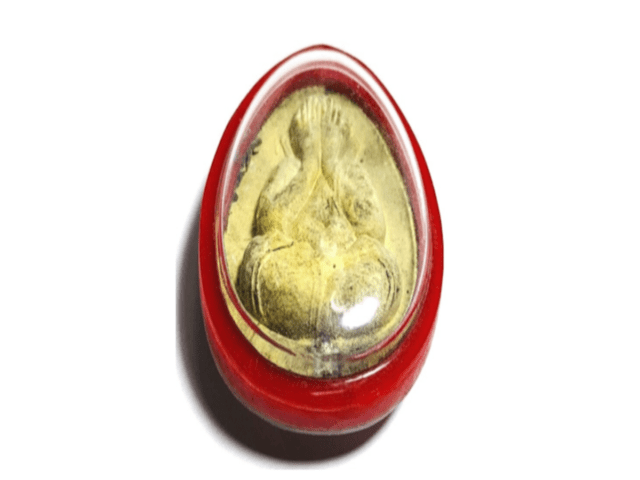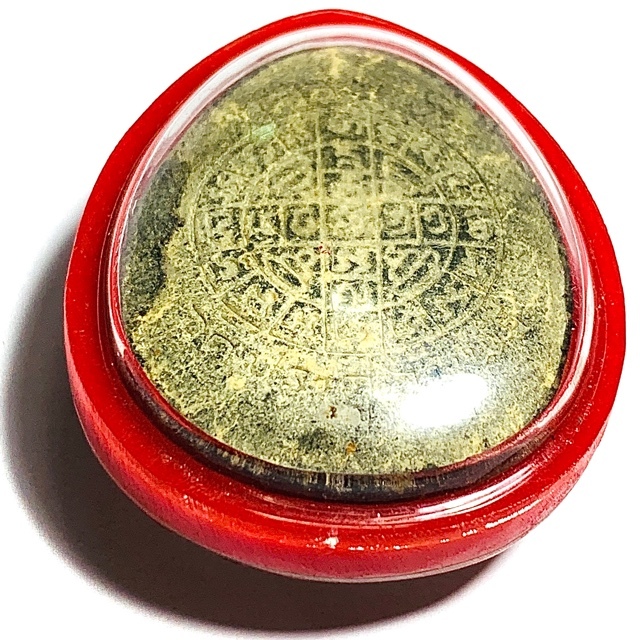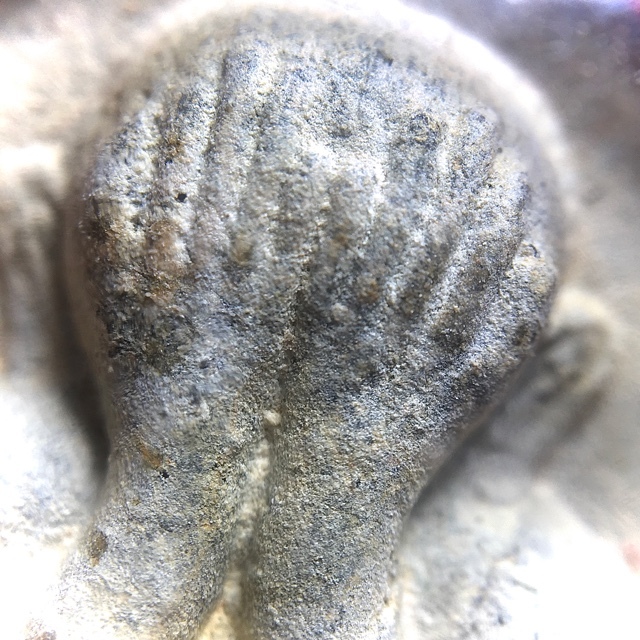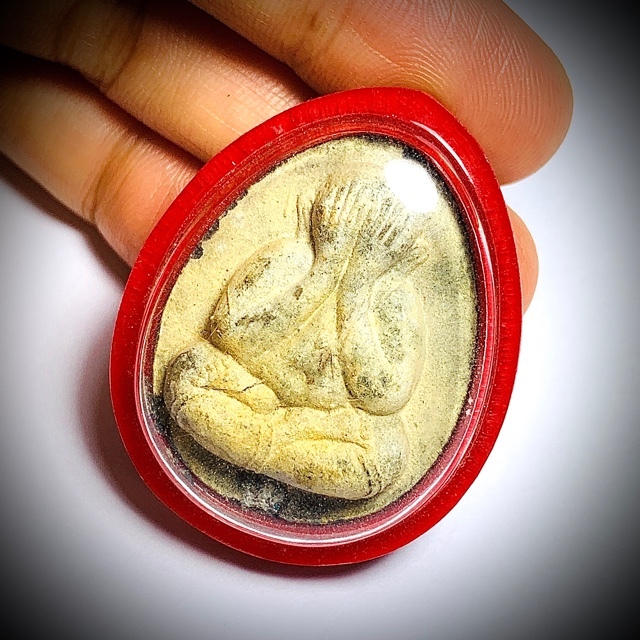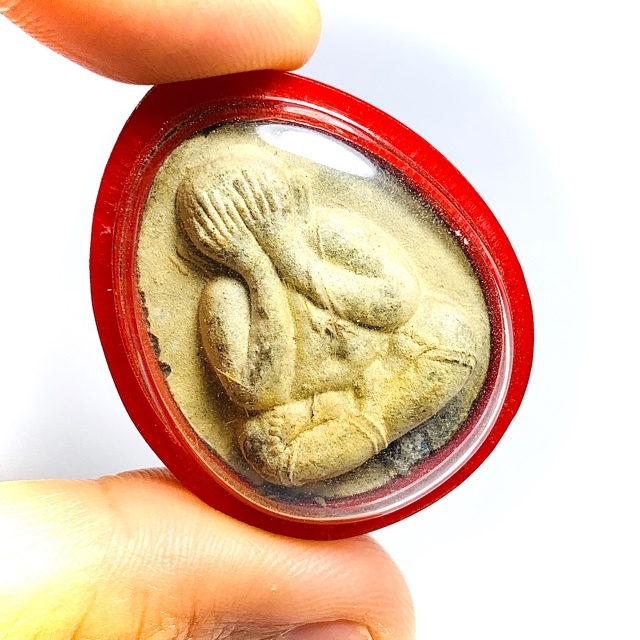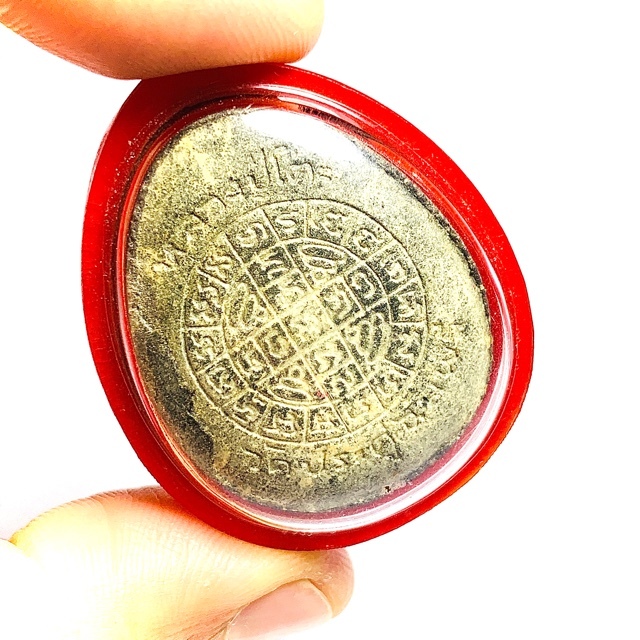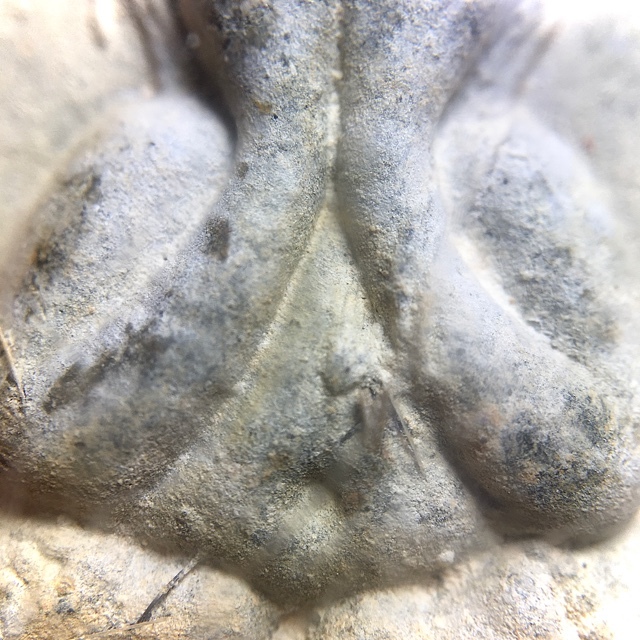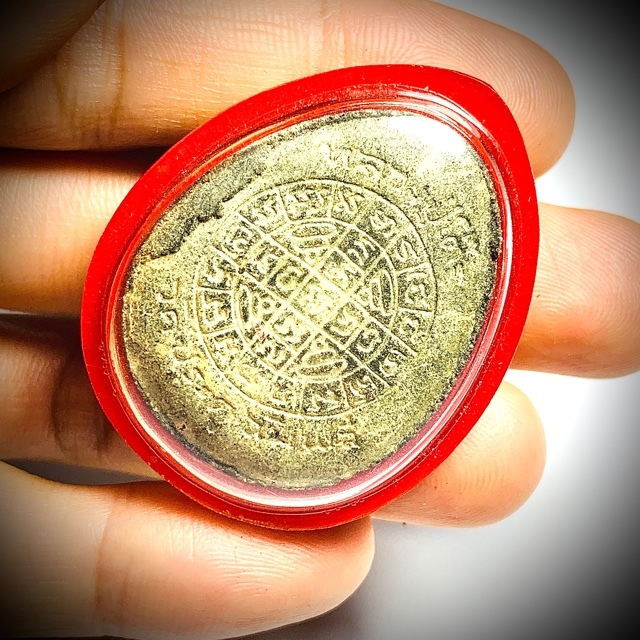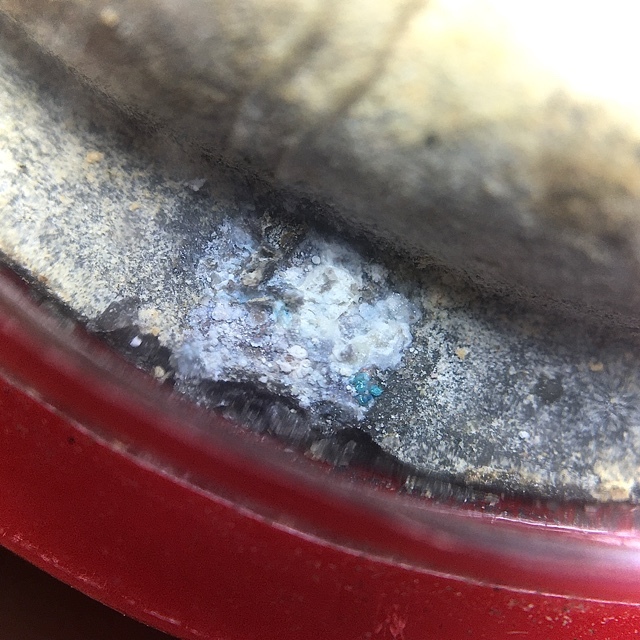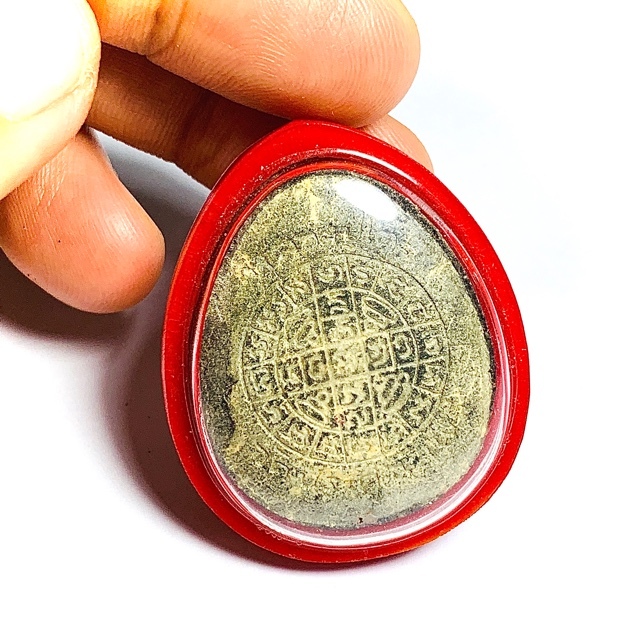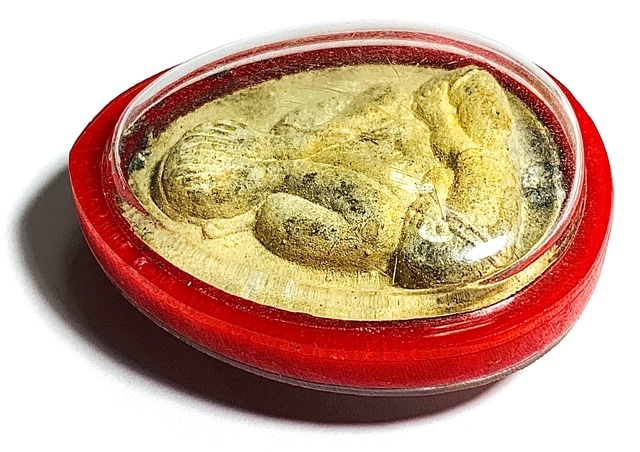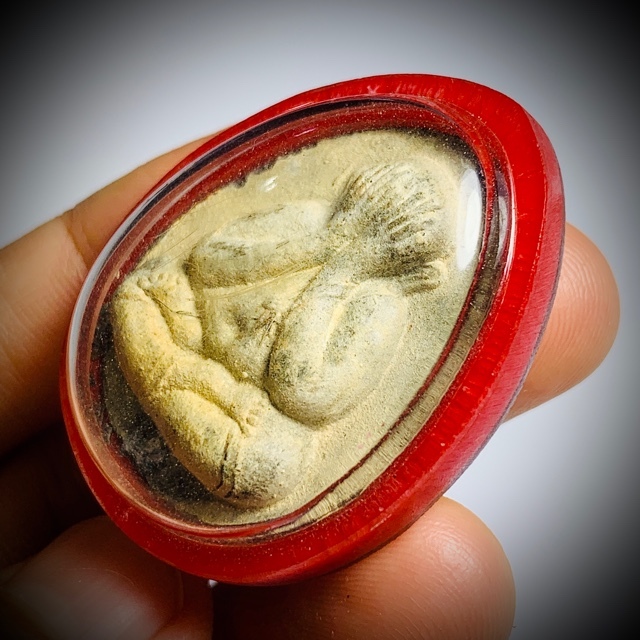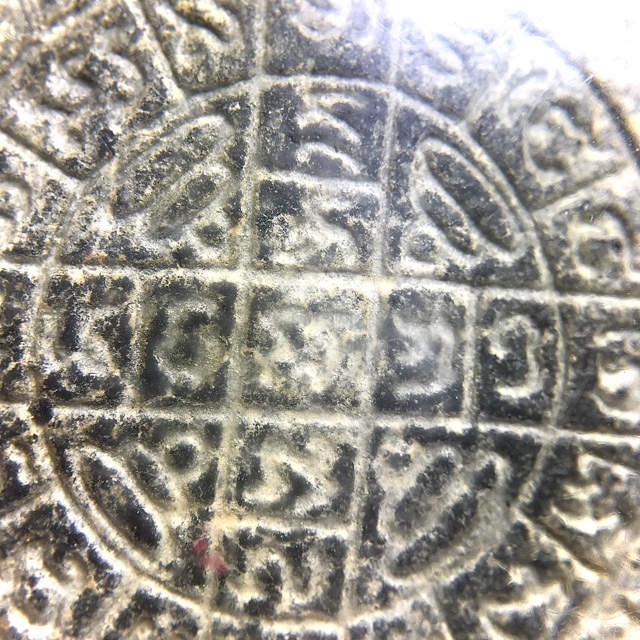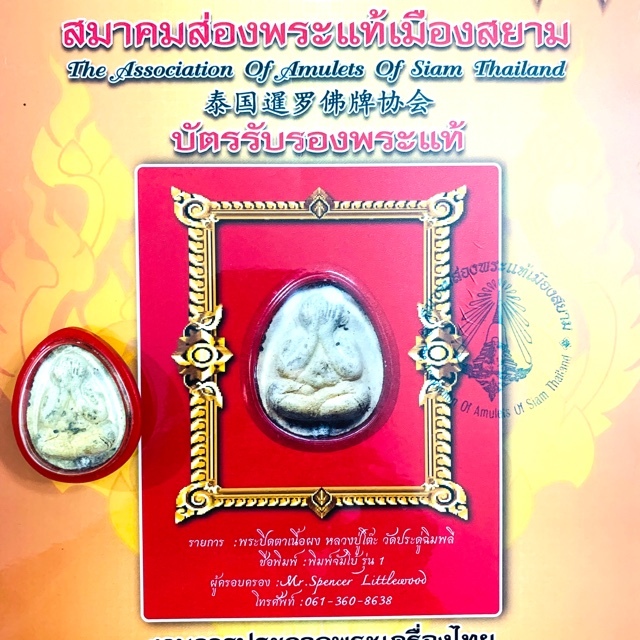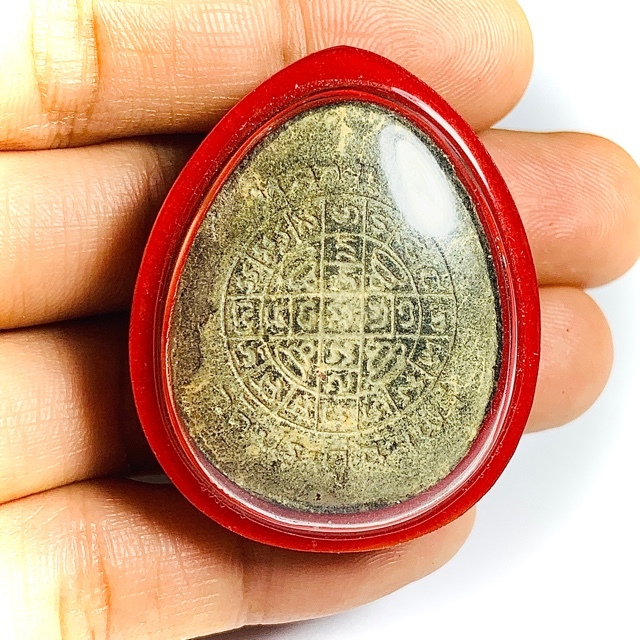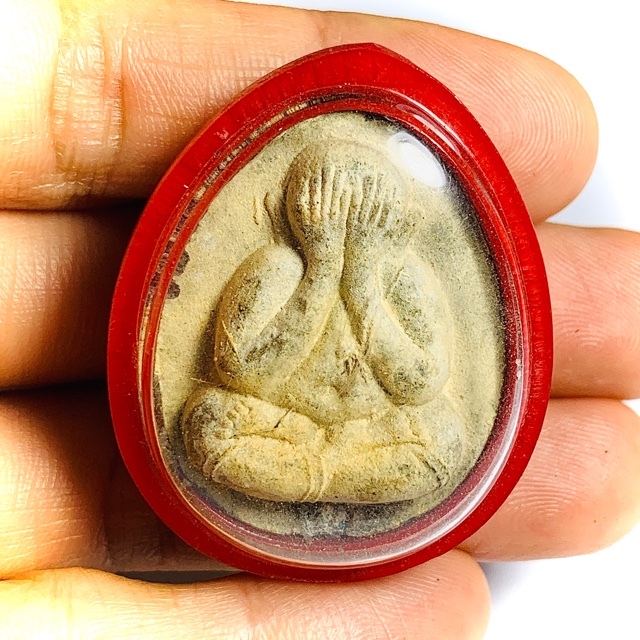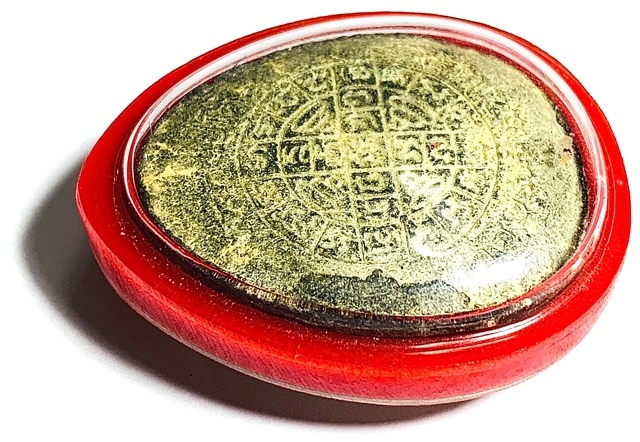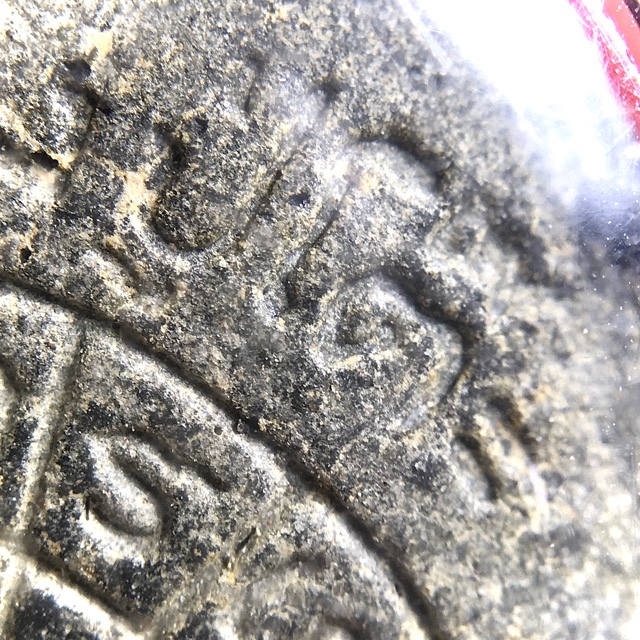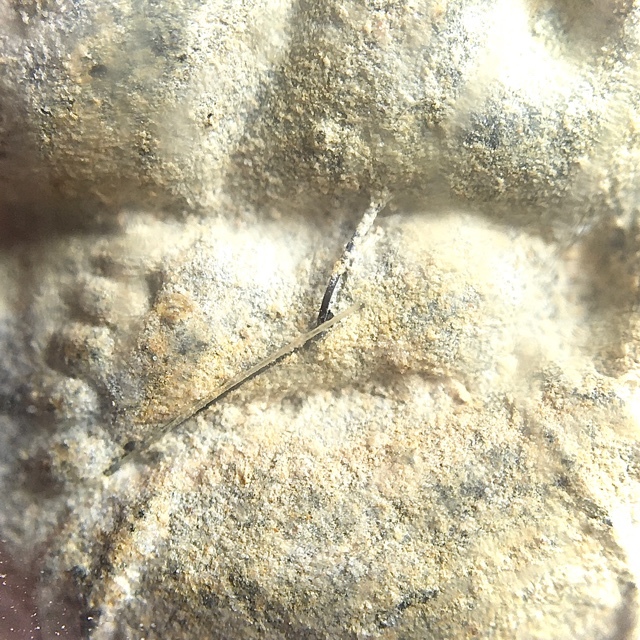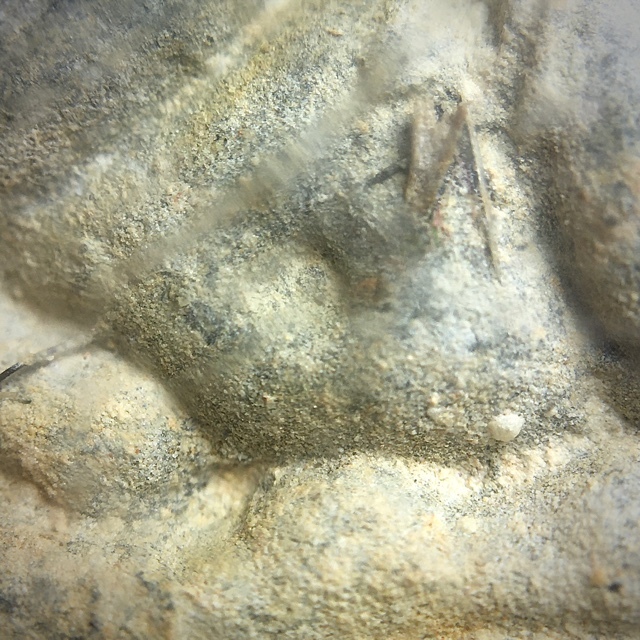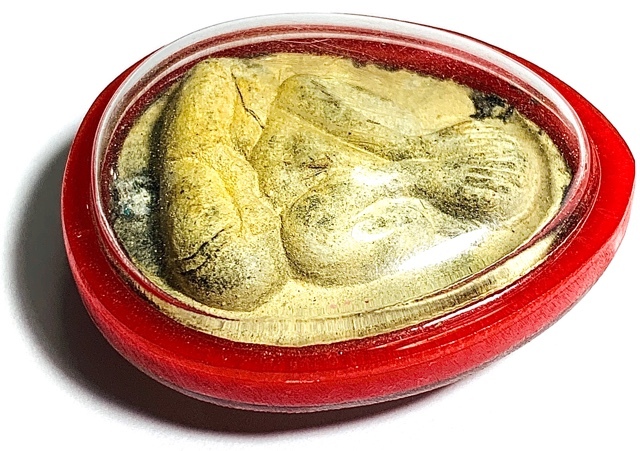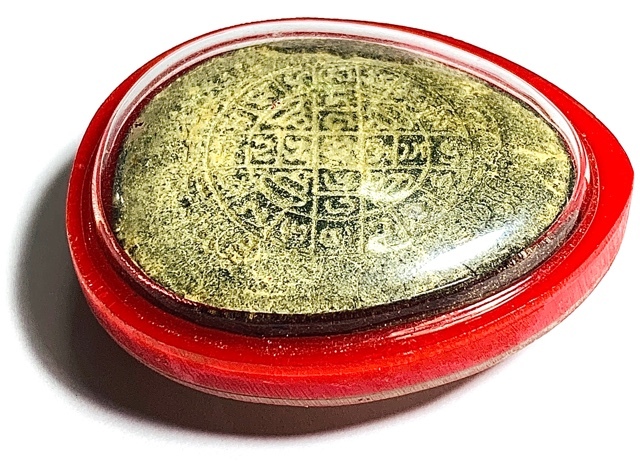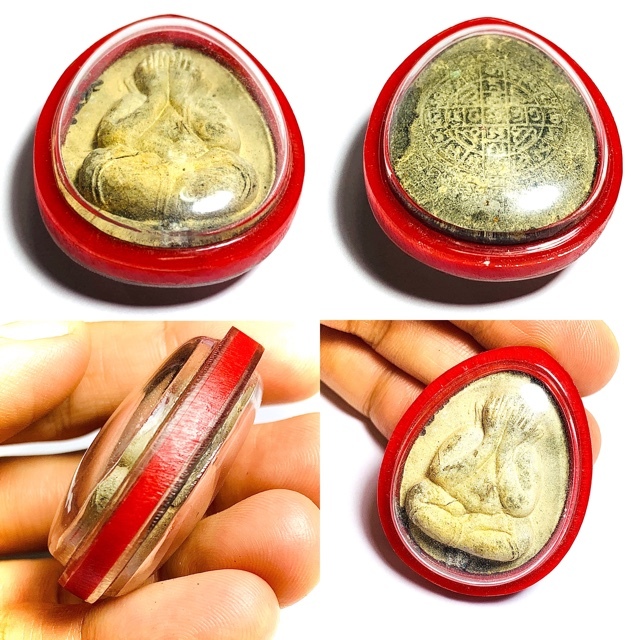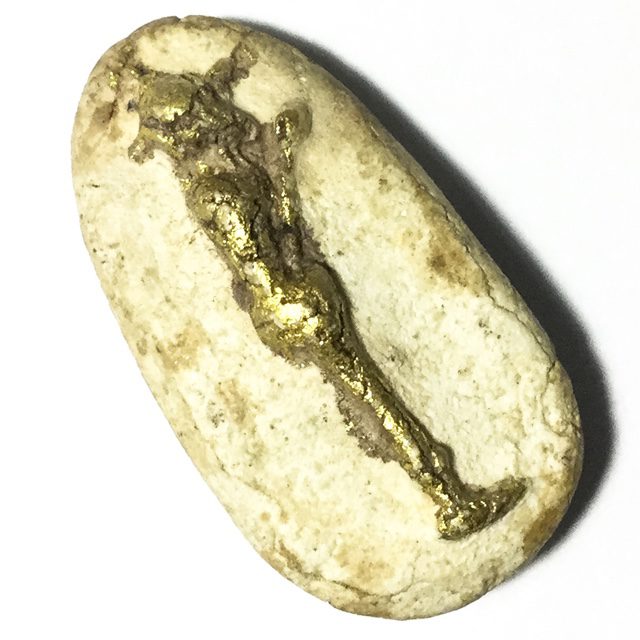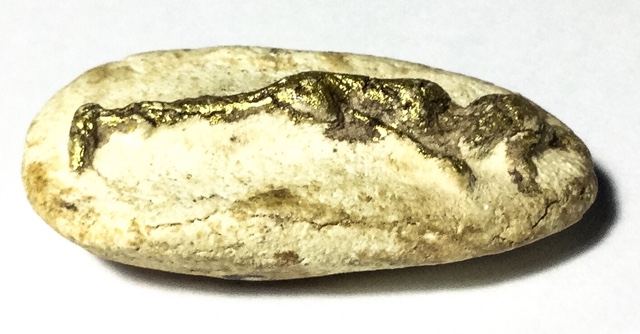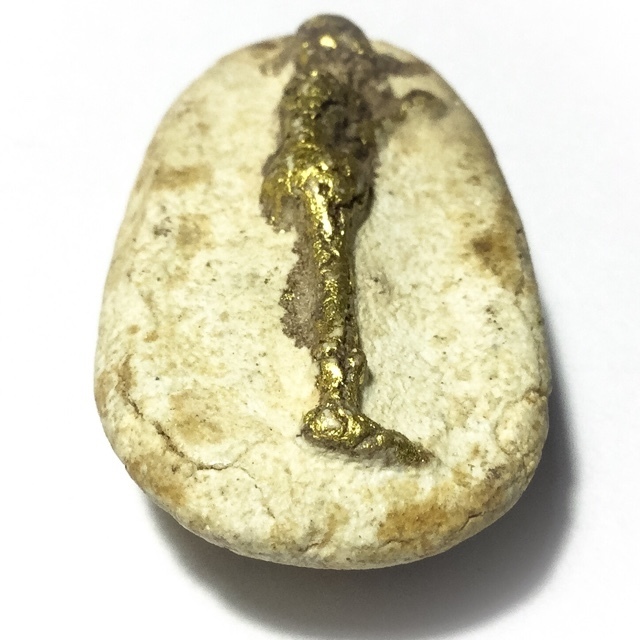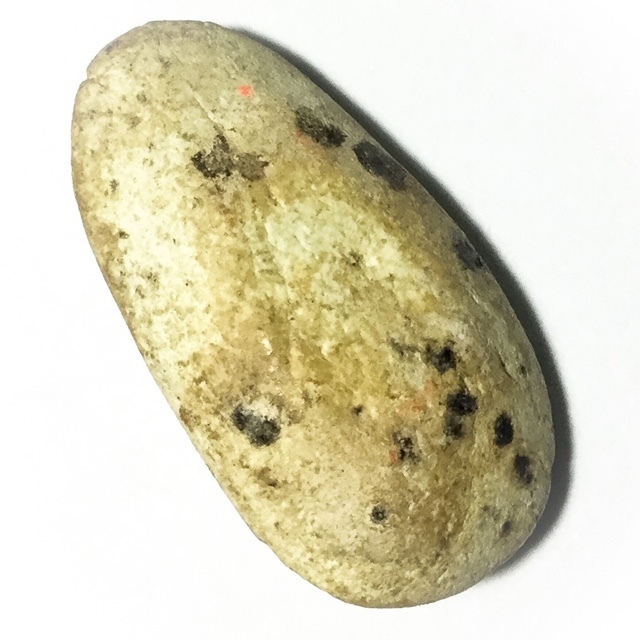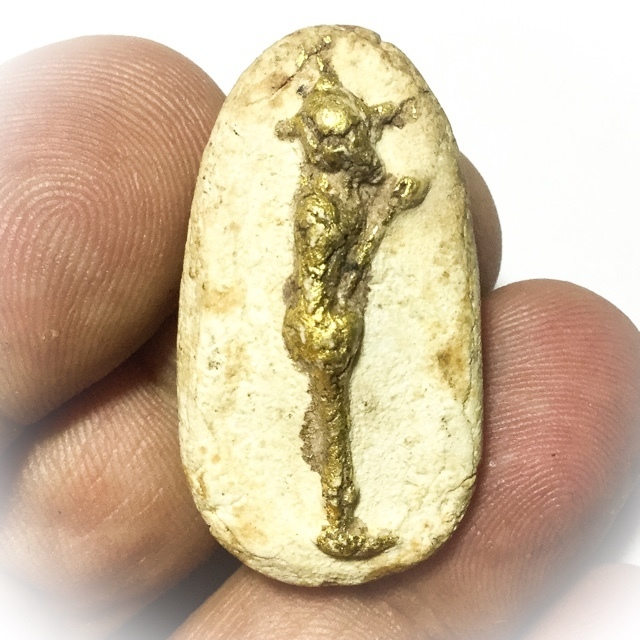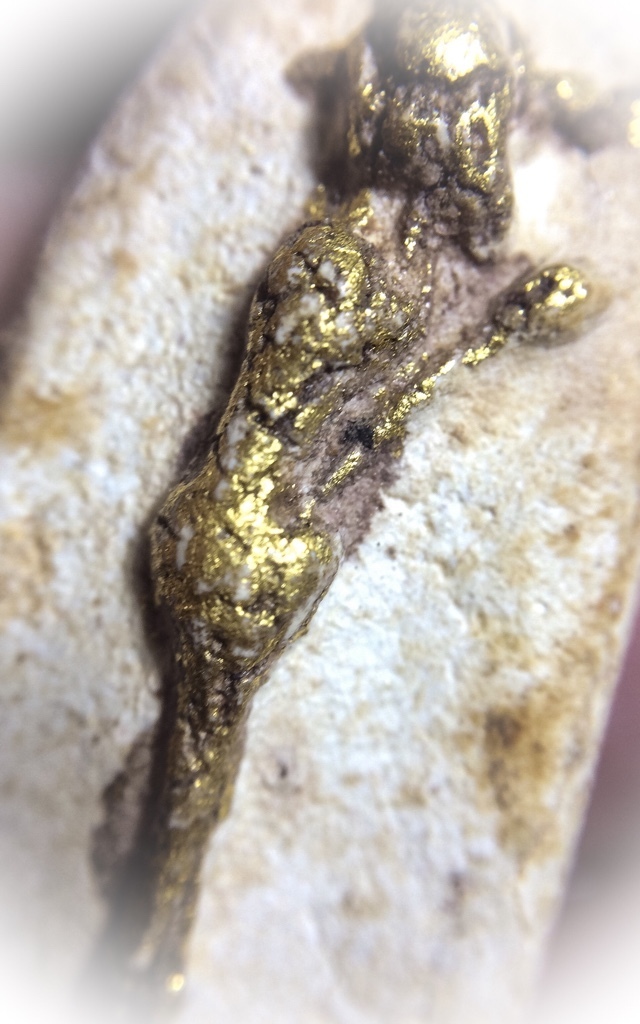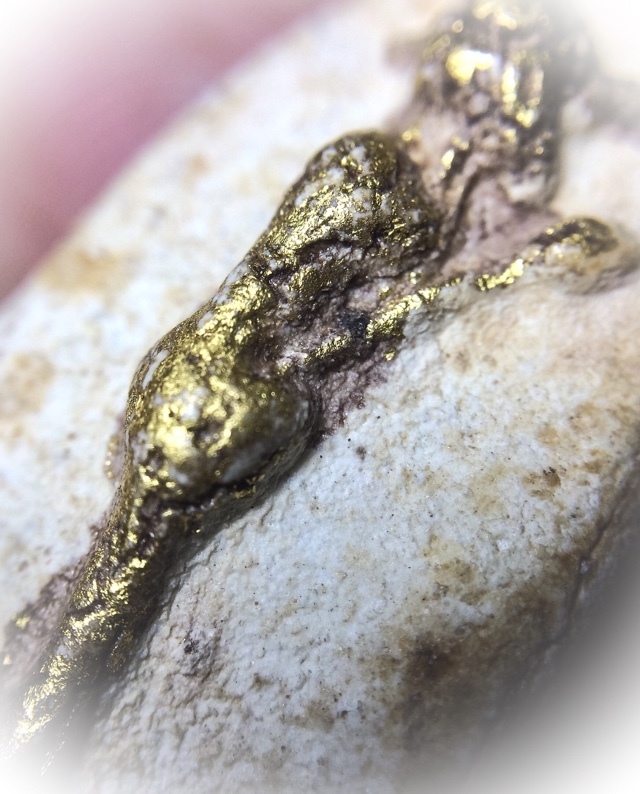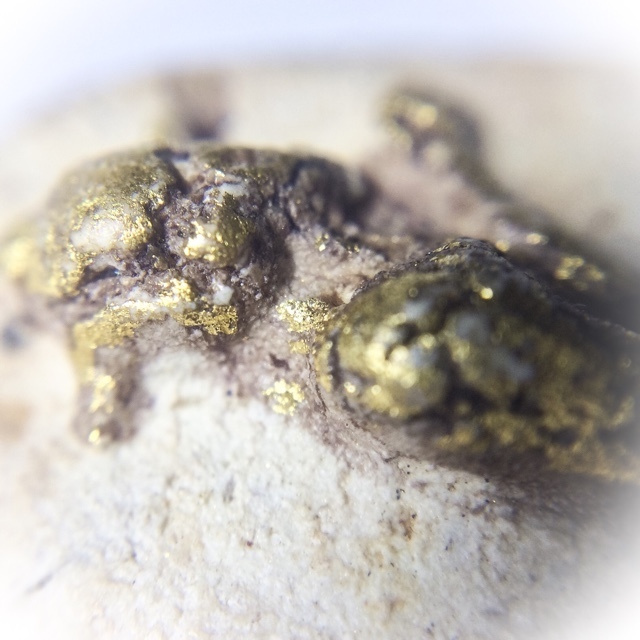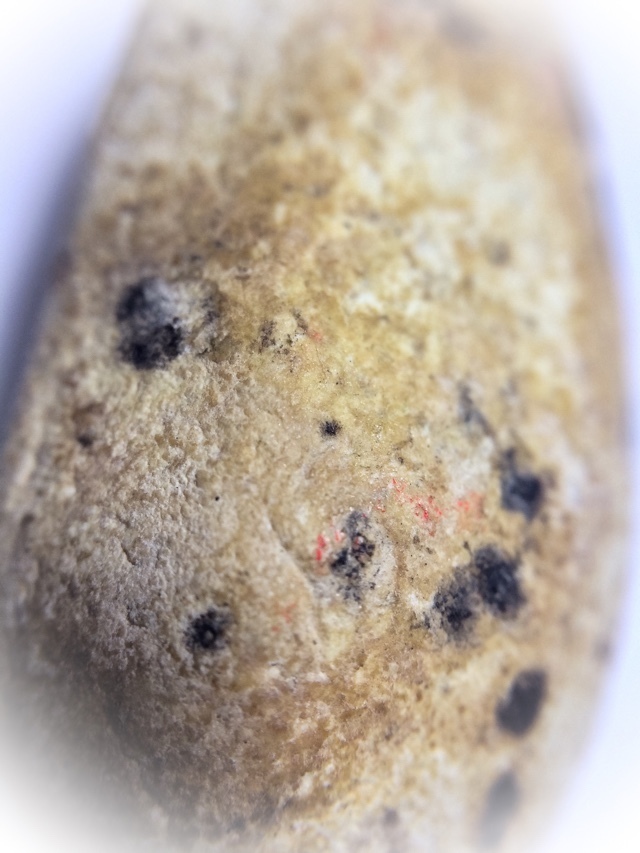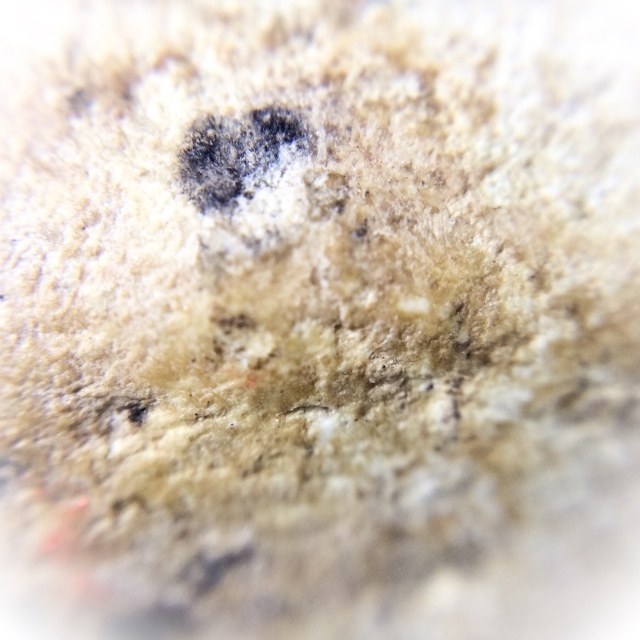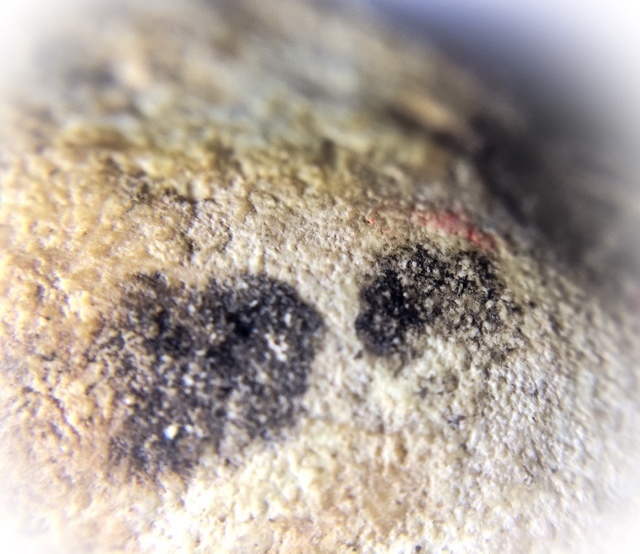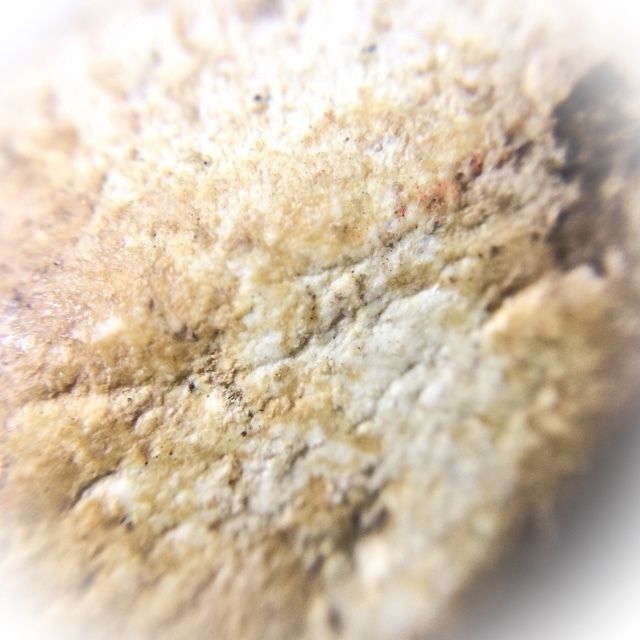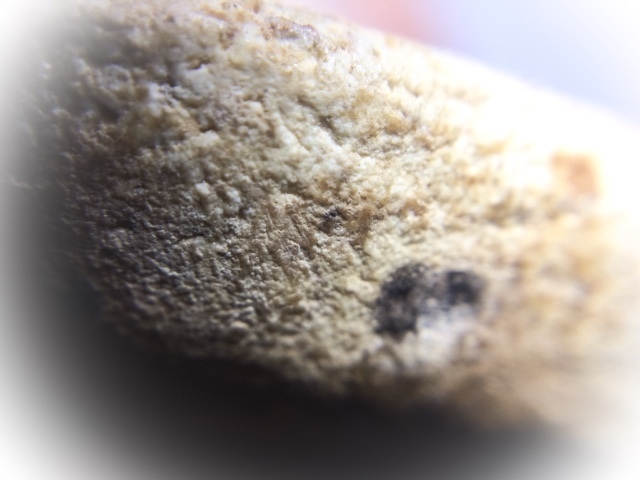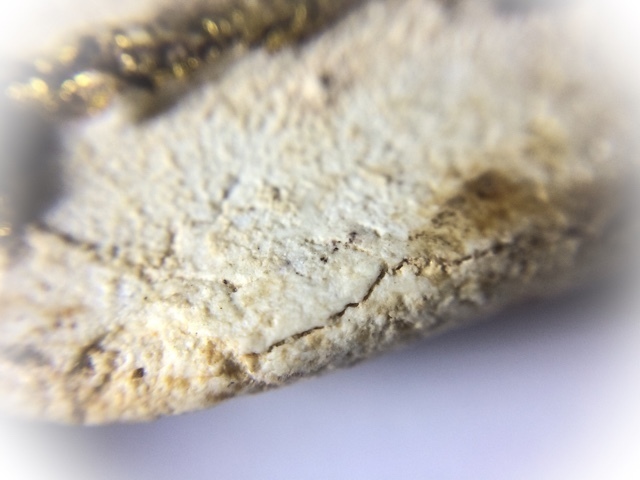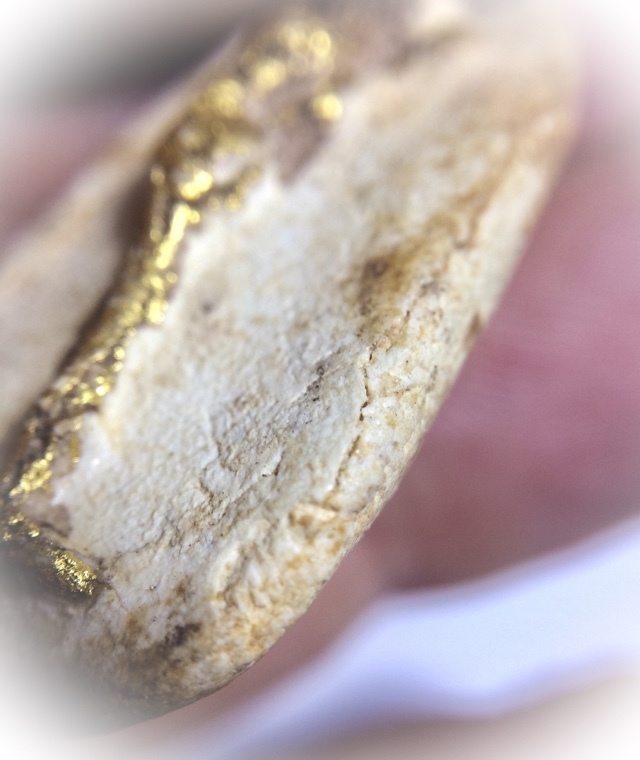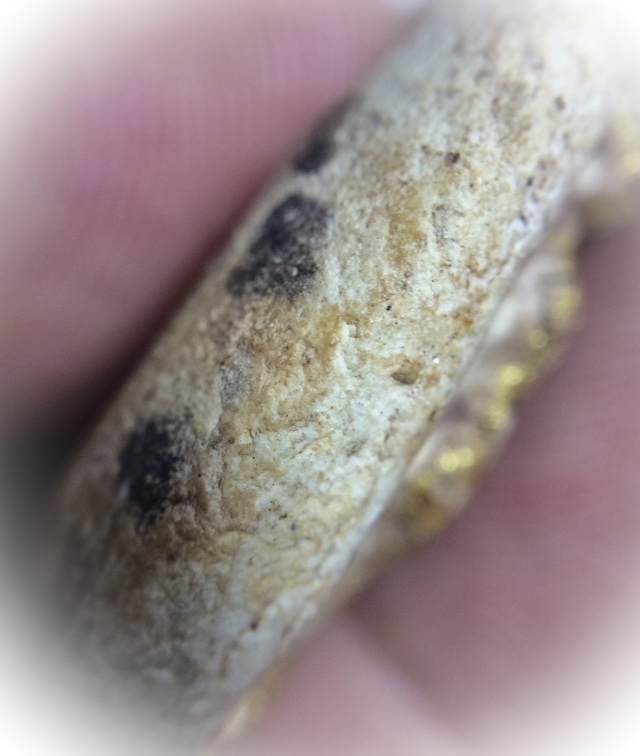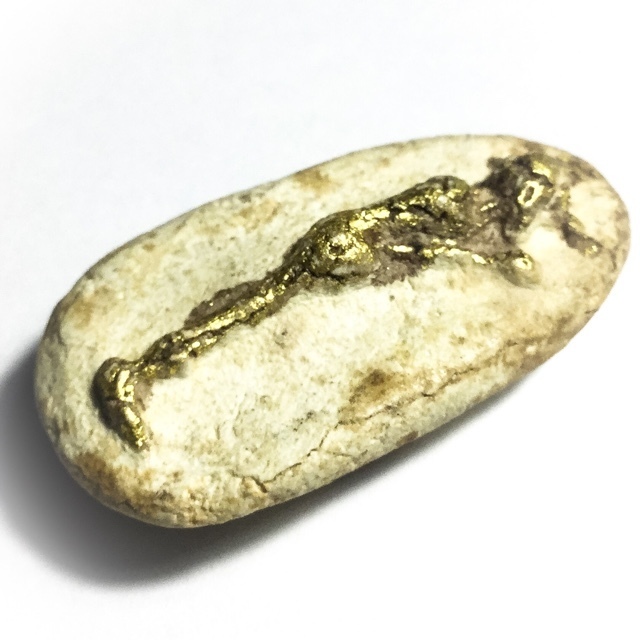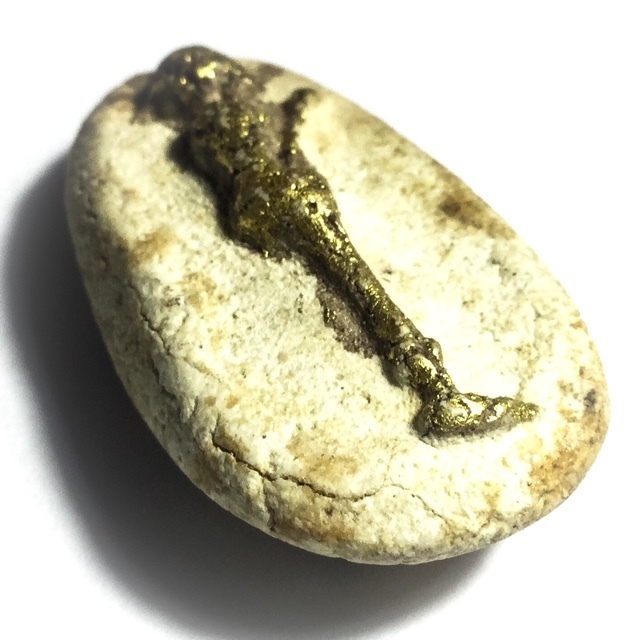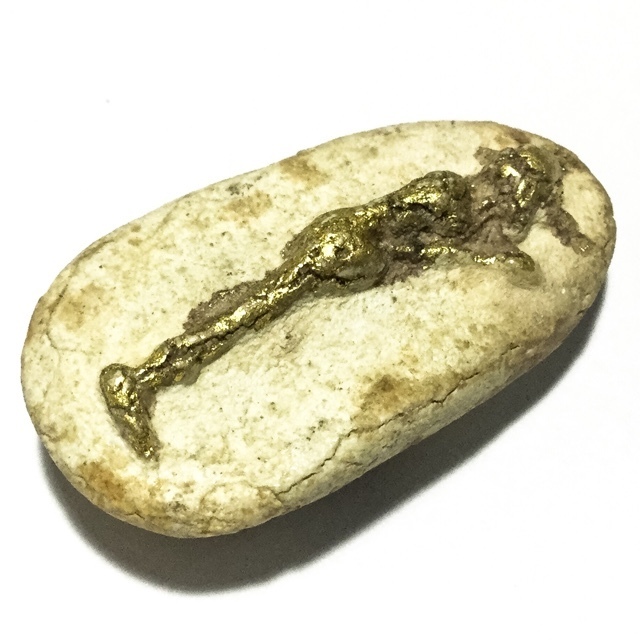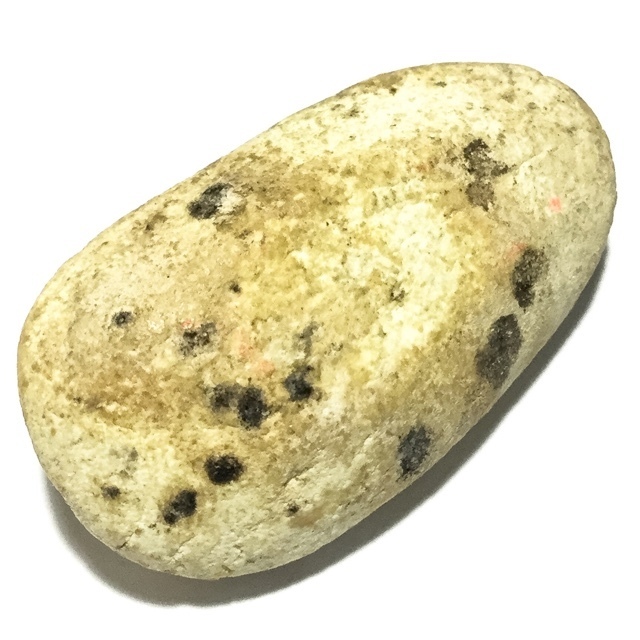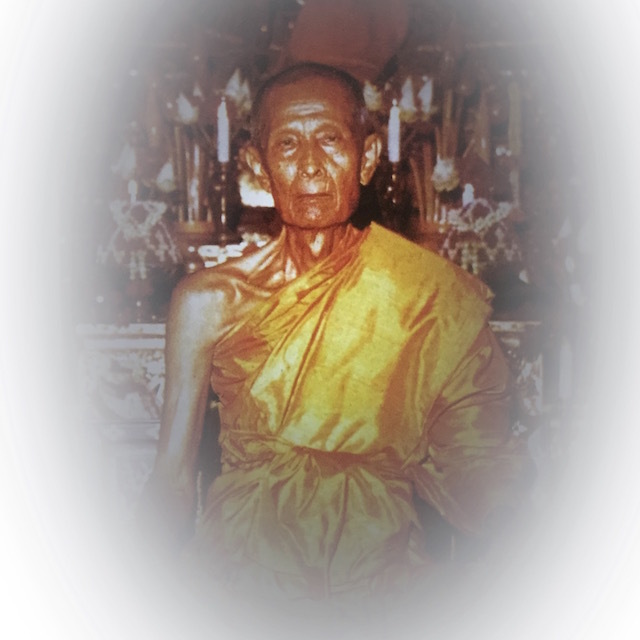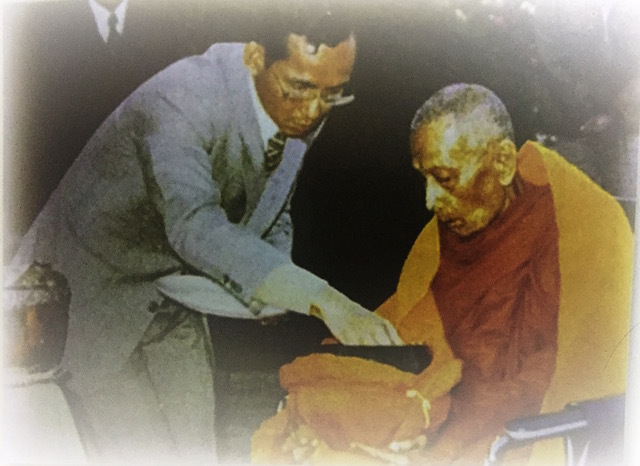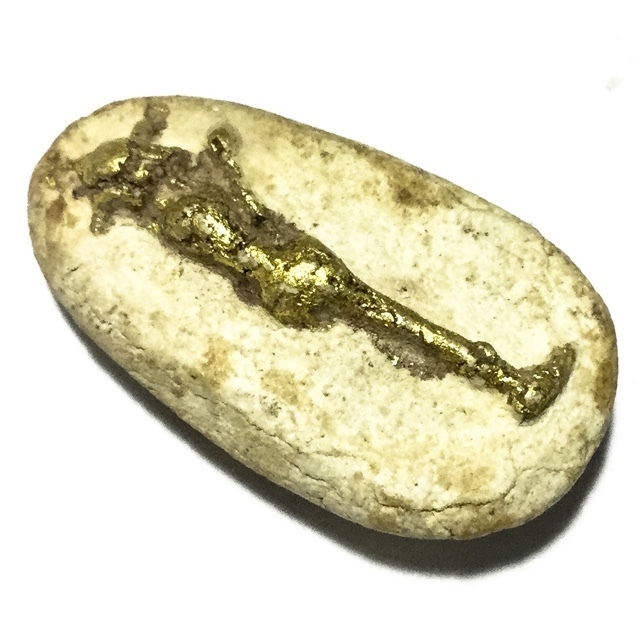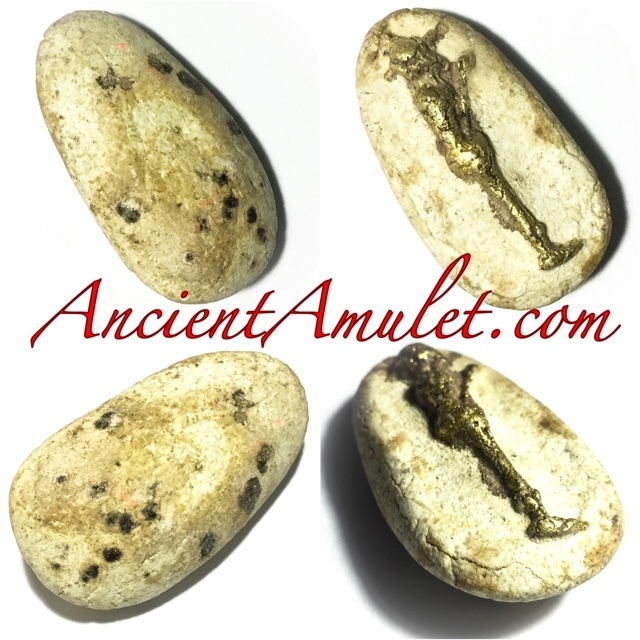Proudly presenting a classic Masterpiece Amulet of World Famous International Fame and Acclaim, the Pra Pid Ta Maha Lap Jumbo Hlang Yant Duang Amulet, with Takrut insert in Nuea Gaesorn (Sacred Pollen Powders), from the Great and Inimitable Luang Phu To, of Wat Pradoo Chimplee.
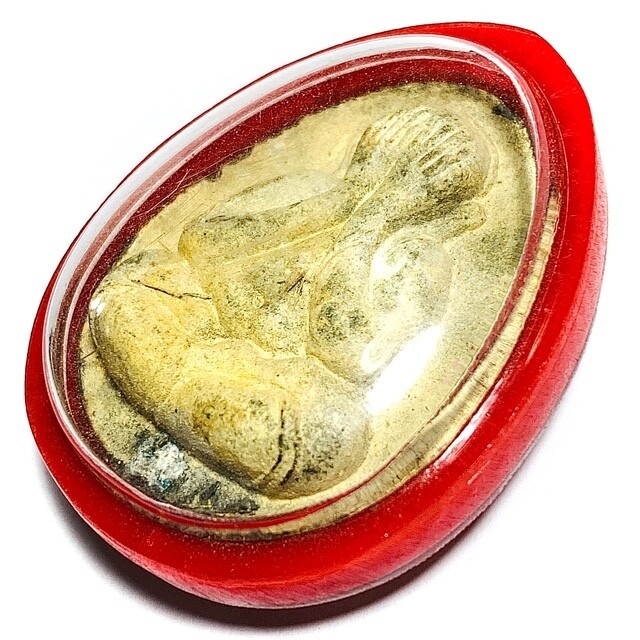
This model is ‘Chae Nam Montr’ (Received Prayer Water Spray and Immersion), which gives the Sacred Powders of the amulet a special fluffy texture, and white mildew. This exhibit exudes Sacred Power with the visible presence of plentiful quantity of Gesa hairs of the Great Master-Monk LP To, which should always be present in greater or lesser proportions with his Pra Pidta Amulets

The empowerment sessions occurred between 2521 BE, and 2523 BE. Luang Phu would also empower the amulets in his Kuti Hut every night he was at the temple even between the Rainy Season Trimesters each year, spraying them with Holy Water blessings. The Pid Ta Maha Lap Jumbo Amulet was made in various Block Mold pressings, with the first and second block being the most documented.
The first block has pointy feet, with no toes detailed and more outward pointing earlobes, whereas the block 2 has highly defined toes and upward pointing soles in three dimensional details, with a raised line traveling over the left foot joint of the meditating Buddha Image.
The surface of the Sacred Powders of the Votive Tablet, are highly distinguished and evidently authentic Sacred Powders of Luang Phu To Wat Pradoo Chimplee – the amulet has very clear features, and respectable aging features to the Muan Sarn. The rear face has the Yant Duang Yai round sacred Yantra Embossed on the surface
This Pid Ta is a Pra Niyom Category Amulet (Preferred Master Class Status), and belongs to the Classic Preferred Editions which were blessed and released at Wat Pradoo Chimplee. There are many other Pra Pid Ta amulets from this great master which were released in other smaller temples, some of which are more affordable, and others are also rare and highly revered and worshiped.
Before making a choice with Pra Niyom amulets from World Famous Masters, it is important to study, and know which editions and which block mold pressings are the preferred amulets, in order to know which ones are carry a higher price tag and which ones a lower price. In principle, any amulet blessed by the same Master should be equally powerful and Sacred. However, the Pra Pid Ta 2521 – 2523 BE three year Blessings series is of course, for those whose budgets can afford it, a most recommendable amulet for both protection and wealth.
The Pra Pid ta Jumbo 2 is also very useful for Practitioners of Buddhism, as Buddhanussati Buddhist Remembrance to practice the Mindfulness Taught by the Buddha, and especially useful meditation amulet for those who are practicing Dhyana Meditation, and seeking Nirodha, the extinguishing of all suffering.
meditating Buddha or Yogi entering into the state of Nirodha, and covering its orifices, which represents the stilling of all the perceptions of the outer world through looking within, and closing all the senses to the outer disturbances, and entering the 4th state of absorption known as Arupa Jhana, where no suffering or excitement of heart is present.
However, due to certain editions having Miraculous Events in the News making them more famous and popular, as well as the Collectorship Scene and the Appreciation Societies who Value and Catalogue the various editions, have caused certain models and series editions to become extremely expensive for their Master Class Status.
Below; The ‘gesa’ (Hairs) of Luang Phu To are visible in the Muan Sarn Sacred Powders of the amulet. this is an essential aspect of investigating the Muan sarn of Luang Phu To Pra Pid Ta amulets, which always have a certain quantity of the hair of Luang Phu To in their mixture and visible on the surface to greater or lesser extent.
It is therefore not necessary for somebody who merely seeks a powerful amulet, to buy the more expensive models, and with a bit of effort to study and make wise decisions, one should choose always what is within one’s own budget.
For those who seek a Sacred Powerful Amulet blessed by this Master, there are many more affordable alternative editions to the Pra Niyom Master Class editions, which we hope to provide ever increasingly along with detailed explanations of each edition and series, so that you can distinguish the differences and make your choices accordingly.

A Takrut spell is inserted into the base of the amulet. A defined ridge is seen where the legs cross at the ankle lines. The Sangkati Sash drapes over the left forearm of the Buddha Image with clearly defined lines, and blends with the chest in subtle fashion. The fingers are clearly defined and elongated.
The surface of the Muan Sarn Sacred Powders has developed a very fluffy texture from the Holy Water sprayed over it, increasing the beauty of the amulet, which is a classic effect of the changing humidities of the atmosphere, and this has given the amulet is distinguished look of authenticity.
Those who seek Sacredness but do not wish to speculate on increasing value, or enter into show competitions for first prize, do not need to spend their money on a Master Class Level Series Amulet, rather, can seek alternatives blessed by the same Master at lower price. Diligent study and research will assist you in making the wise choice according to your personal wishes and needs.
Luang Phu To of Wat Pradoo Chimplee was one of the greatest Masters of the Last Century, and a Highly revered Monk around the whole Kingdom of Thailand. he was Respected and revered by His Majesty Our great King, who was a close friend and companion.
Below; the Gesa (hairs) of the Great Monk, are visibly present in high proportion within the Muan Sarn Sacred Powder Clay of the amulet.
This Great Monk achieved his status through his Great deeds and his great Diligence in his Patipatā (Practice of Purity and Renunciation), and in his Great Attainments in Dhamma Pariyatti and Dhamma Patipatā. Luang Phu To was born on the 27th March 2429 BE in Ban Klong Bang Noi in Samutr Prakarn and passed away on 5th March 2524 BE. His many honorable awards of status reflect his great practice and diligence, since beginning to studdy the Dhamma Vinaya at Wat Pradoo as a Samanera Novice monk, through to become the Bishop of the Ta Pra Municipality (2463 BE), to becoming awarded the charge of being the Pra Kroo Sangka Wichit for the Abbot of Wat Maha Tat in 2457 BE.
In 2463 BE, Luang Phu To became ascended to the status of Pra Kroo Sanya Badtr Chan Dtri (Third Level, tantamount to Batchelor of Arts in Dhamma). In 2497 BE, Luang Phu then became promoted to Pra Kroo Sana Badtr Chan Toe (Second Level, tantamount to a Doctorate in Dhamma), of Royal Category. In the year 2500 BE, Luang Phu was then given the additional status of Upachaya Ordaining Officer.
In the year 2506 BE, Luang Phu attained the status of Pra Kroo Sanya Badtr Chan Ek (tantamount to a Masters Degree in Dhamma). In 2510 BE Luang Phu To was given the charge of being the Gammagarn treasurer of the Temples of Ta Pra Minicipality.Then, in 2511 BE, Luang Phu To was promoted once more to Pra Kroo Chan Kroo Pised (tantamount to an Honors degree in Dhamma).
In 2516 Luang Phu became Pra Racha Kana (Royal Appointment Sangha Comittee) and head officer of the General Affairs of Vipassana Practice. In 2521, Luang Phu To received the status of Pra Racha Kana Chan Rach (tantamount to being an Archbishop of the Royal Decree). His Blessings are believed to possess the most powerful protective power, and to increase success and prosperity. His amulets are both highly revered for their sacred Power of Protection and Prosperity, but also as a connection and Buddhanissati reminder of the Great Guru master, to beseech his blessings through the amulet. One of the most highly sought after Pra Niyom Category Amulets, which is seen to grace the pages of any and every important amulet encyclopedia, and the highly prized and jealously guarded talisman of the high end collector and devotee.
